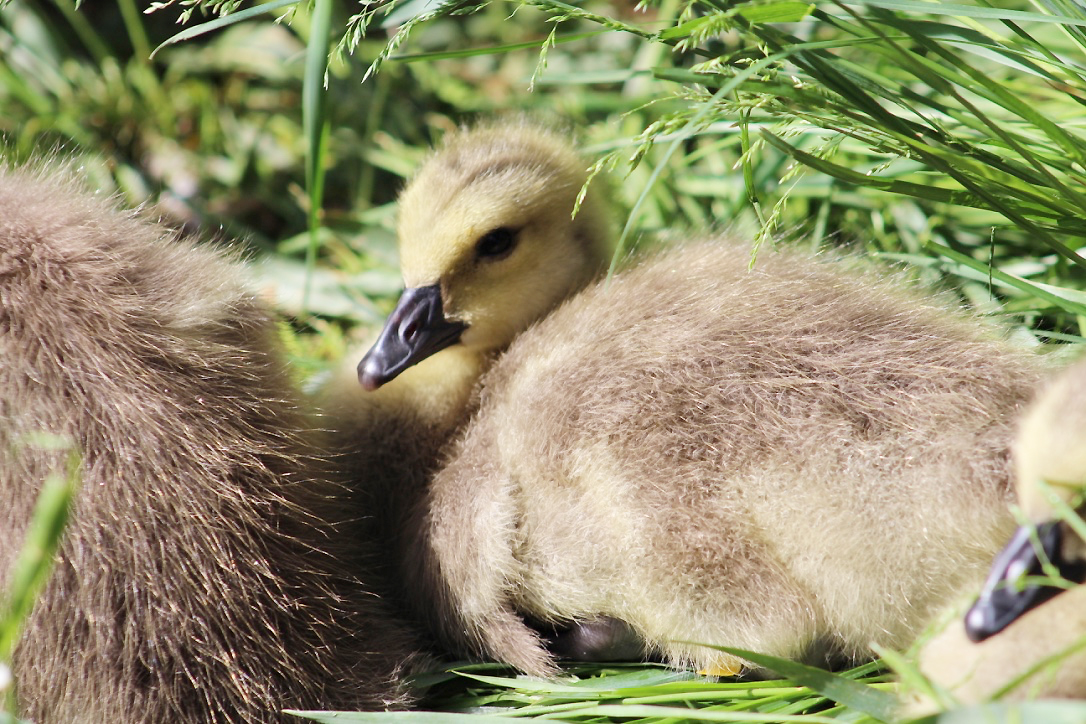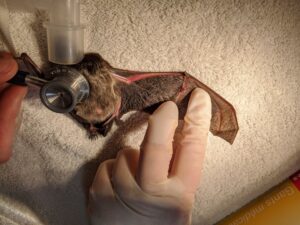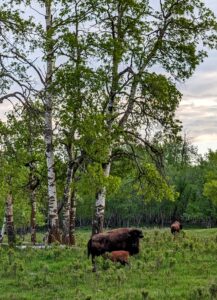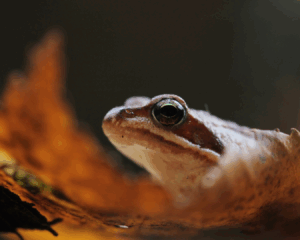Have you ever wondered what a bird eats in the wild? Obviously bread is not found in the wild, nor should it EVER, under ANY circumstance be fed to a wild bird (see https://www.aiwc.ca/do-not-feed-the-ducks/). So what do they eat? How do their diets differ in the winter than in the summer? Also, how do they access their food? Do they have special adaptations to allow them to eat certain things? Hopefully this blog will answer some questions you might have about a bird’s diet, and how a few species have evolved with their diets!
Birds that stick around during our winter season in Canada don’t have as wide of a variety of food in winter as they do the rest of the year.
- Songbirds that stay in the Calgary areas, such as chickadees and nuthatches, are heavily dependent on stores of food that they’ve cached (hidden) throughout the year, and seeds and nuts found on conifer trees in the winter (Cornell 2017a).
- Magpies, crows and ravens (and other corvids) are opportunistic eaters and often scavenge throughout the winter for seeds, carrion (carcasses), and will also prey upon squirrels, voles and even other birds (Cornell 2017b). Magpies are even known to pick ticks off of cattle, moose and deer (Cornel 2017b).
- Some ducks and geese that stay all winter rely primarily on seeds, including agricultural grains, for their main food sources (Cornell 2017c,d).
As more birds are returning north after their winter migrations, their food sources are also becoming more plentiful.
- Songbirds can start to include more insects, wild fruit and a wider variety of seeds and nuts.
- Corvids also include more insects and wild fruit into their diets, as well as the eggs of other birds, the young of birds and small mammals, and even amphibians.
- Waterfowl rely more heavily on aquatic vegetation, aquatic insect larvae, earthworms, snails and freshwater shrimp (Cornell 2017d).
Patients at AIWC receive balanced diets that attempt to mimic the nutrients they would find in the wild. Various household fruits and vegetables, as well as mealworms, eggs, and a variety of seeds and nuts are some of the items you would find in AIWC’s kitchen on any given day. Vitamins and supplements are often added to patient’s meals to ensure they recover back to full health prior to release.
Interestingly, birds have physical adaptations that have evolved over time to allow them easier access to their food sources. Here are just a few of them!
- Of the 10,000 birds species on earth, only 5 have crossed bills and they are all in the finch family (Cornell University 2017e). A crossed bill refers to when the upper and lower parts of the beak do not line up and cross over each other when they are closed. This type of bill or beak is adapted to reach seeds deep in some tree cones that other birds cannot reach. The white-winged crossbill is an example of a bird that has this adaptation and is found in the Calgary region. Similar to right a left-handed people, not all crossed bills cross in the same direction!
- Birds such as woodpeckers have adapted to be able to peck at the bark of trees to find sap or insects hiding below (Cornell University 2017f). Not only are their beaks, necks, and skulls incredibly strong, but their tails feathers and feet are also adapted to help grip the trunk of a tree as they stand on it and peck. Woodpeckers also have incredibly long tongues to penetrate the holes they peck to get at the insects and sap. Their tongues wrap around their skulls all the way to just behind their eyes!
- Ducks bills have evolved to allow for efficient foraging in water. The outer edges of a duck bill are soft, and are used to feel for their food (Ducks Unlimited 2018). Ducks bills have a point at the end that is used for moving food, similar to how we would use our fingernails (Ducks Unlimited 2018). On the inside of a duck bill you will find lamellae. Lamellae look like teeth, and act like a filter to separate food from non-food items when foraging in the water.
Next time you are outside and observing the birds around you, stop and assess what type of food they are eating and how they are eating it! You might be surprised to notice what they are eating and how they’ve adapted to eat it!
As the spring season begins to ramp up, AIWC will be expecting increasing numbers of patients we receive. Food is vital in the rehabilitation of patients! If you would like to contribute to the care of our patients, please visit our donation page (https://aiwc.shop/products/donate-to-aiwc).
Please feel free to leave a comment below about a special food-related adaptation you’ve noticed!
By Tayler Lafreniere, AIWC Volunteer
References:
Cornell University. 2017a. Red-breasted Nuthatch: Life History. The Cornell Lab of Ornithology. Available at: https://www.allaboutbirds.org/guide/Red-breasted_Nuthatch/lifehistory#food. Accessed March 12, 2018.
Cornell University. 2017b. Magpie: Life History. The Cornell Lab of Ornithology. Available at: https://www.allaboutbirds.org/guide/Mallard/lifehistory#food. Accessed March 12, 2018.
Cornell University. 2017c. Canada Goose: Life History. The Cornell Lab of Ornithology. Available at: https://www.allaboutbirds.org/guide/Canada_Goose/lifehistory#food. Accessed March 12, 2018.
Cornell University. 2017d. Mallard: Life History. The Cornell Lab of Ornithology. Available at: https://www.allaboutbirds.org/guide/Mallard/lifehistory#food. Accessed March 12, 2018.
Cornell University. 2017e. White-winged Crossbill Foraging Adaptation. Available at: https://academy.allaboutbirds.org/white-winged-crossbill-foraging-adaptation/. Accessed March 12, 2018.
Cornell University. 2017f. Built to Peck: How Woodpeckers Avoid Brain Injury. Available at: https://academy.allaboutbirds.org/built-to-peck-how-woodpeckers-avoid-brain-injury/#_ga=2.244171203.770611876.1520903819-543352664.1407089867. Accessed March 12, 2018.
Ducks Unlimited. 2018. The Scoop on Duck Bills. Available at: https://www.ducks.org/conservation/waterfowl-research-science/the-scoop-on-duck-bills. Accessed March 12, 2018.







1 thought on “What do birds eat and how do they eat it?”
ty for this article. Feeling guilty about feeding birds bread crumbs and pizza crusts…shame on me. My BF told me the same thing you informed me about. I will feed them for now on what you have mentioned.